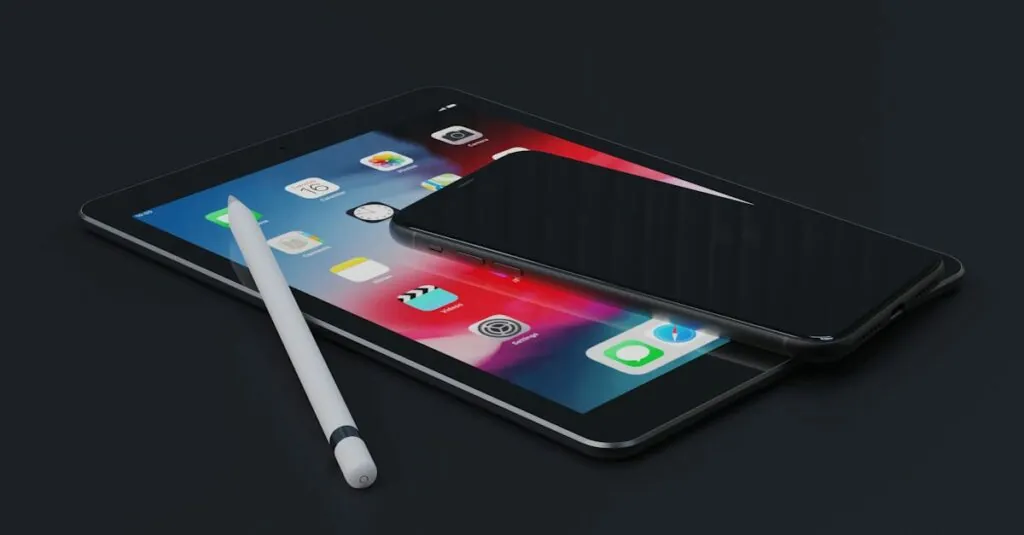When it comes to iPhones, size really does matter—or at least it feels that way when you’re trying to decide between the iPhone 11 and the XR. Both devices sport sleek designs and impressive features, but are they actually the same size? Spoiler alert: the answer might surprise you.
Table of Contents
ToggleOverview of iPhone 11 and iPhone XR
The iPhone 11 and iPhone XR share design similarities but possess distinct specifications. Understanding these differences aids in making an informed choice.
Key Specifications Comparison
iPhone 11 features a 6.1-inch Liquid Retina HD display, while iPhone XR also offers a 6.1-inch Liquid Retina HD display. Both smartphones utilize Apple’s A12 Bionic chip, but the iPhone 11 includes the more advanced A13 Bionic chip. Battery life differs, with iPhone 11 lasting up to 17 hours on a single charge compared to iPhone XR’s 16 hours. Camera capabilities also vary significantly; iPhone 11 boasts a dual-camera system while iPhone XR includes a single-camera setup. These specifications emphasize performance contrasts that affect user experience.
Design and Build Quality
Both iPhone 11 and iPhone XR exhibit a sleek and modern design. Aluminum frames and glass backs contribute to a premium feel in both devices. However, iPhone 11 offers enhanced water and dust resistance, rated at IP68, whereas iPhone XR carries an IP67 rating. Color choices vary as well; iPhone 11 comes in six options, including purple and green, while iPhone XR offers a palette of vibrant colors like coral and yellow. Overall, differences in design and build quality can influence consumer preference based on style and durability factors.
Dimensions and Weight
The dimensions and weight of the iPhone 11 and iPhone XR reflect their design intentions. Understanding these measurements helps consumers decide between the two models.
Height and Width
Both the iPhone 11 and iPhone XR share identical height and width dimensions, each measuring 6.1 inches in height and 2.98 inches in width. This similarity results in a comparable footprint, allowing users to fit both devices comfortably in their hands. With such equal measurements, case compatibility also becomes a consideration for those upgrading or switching devices.
Thickness and Weight
Differences emerge when analyzing thickness and weight. The iPhone 11 has a thickness of 0.33 inches and weighs 6.84 ounces. In contrast, the iPhone XR measures 0.33 inches and weighs slightly less at 6.84 ounces. Though the thickness remains identical, slight weight variations can influence user preferences, especially for individuals prioritizing portability.
Screen Sizes and Display
Despite sharing similar dimensions, the iPhone 11 and iPhone XR feature notable differences in their display technology and resolution, impacting user experience.
Display Technology
Both the iPhone 11 and iPhone XR utilize Liquid Retina HD technology. Each model comes with a 6.1-inch display, offering vibrant colors and sharp visuals. While both devices deliver excellent brightness levels, the iPhone 11 enhances visual experience with improved color accuracy. Additionally, the iPhone 11 incorporates a broader color gamut, resulting in a more immersive viewing experience for multimedia content.
Resolution and Quality
The iPhone 11 and iPhone XR boast a resolution of 1792 x 828 pixels. This ensures that both devices provide decent clarity for everyday tasks. However, the iPhone 11 slightly outperforms the XR in terms of quality, offering higher pixel density at 326 ppi compared to the XR’s 326 ppi as well. Users can notice the enhanced sharpness and clarity while scrolling through images or watching videos on the iPhone 11.
When comparing the iPhone 11 and iPhone XR it’s clear that while they share similar dimensions and a sleek design their differences can influence user experience. The iPhone 11’s enhanced processing power camera capabilities and better water resistance make it a compelling choice for those looking for advanced features. Meanwhile the iPhone XR remains a solid option for users who prioritize portability and a slightly lighter device. Ultimately the decision between these two models will depend on individual preferences and needs.








